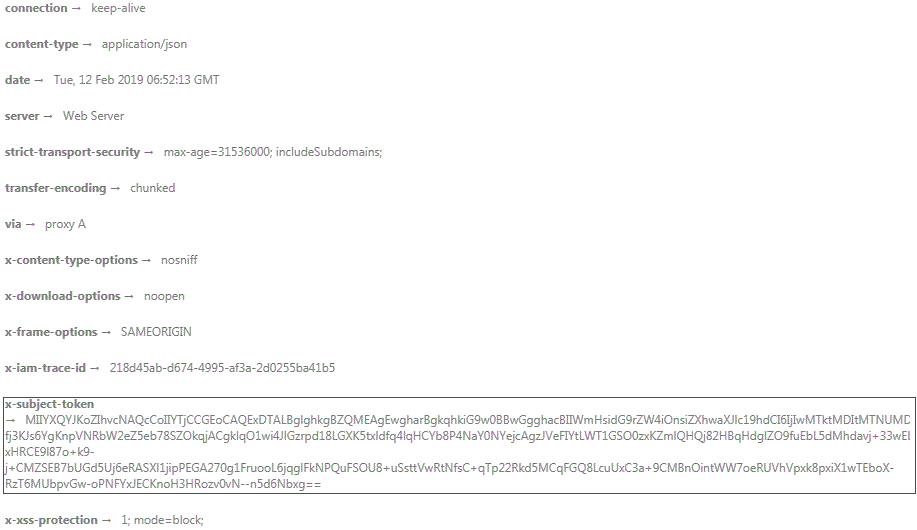Returned Values¶
Status Code¶
After sending a request, you will receive a response, including a status code, response header, and response body.
A status code is a group of digits, ranging from 1xx to 5xx. It indicates the status of a request. For more information, see Status Code.
For example, if status code 201 is returned for calling the API used to obtain a user token, the request is successful.
Response Header¶
Similar to a request, a response also has a header, for example, Content-Type.
Figure 1 shows the response header fields for the API used to obtain a user token is called. The x-subject-token header field is the desired user token. This token can then be used to authenticate the calling of other APIs.

Figure 1 Header fields of the response to the request for obtaining a user token¶
Response Body¶
The body of a response is often returned in structured format as specified in the Content-type header field. The response body transfers content except the response header.
The following is part of the response body for the API used to obtain a user token. The following shows part of the response body for the API to obtain a user token.
{
"token": {
"expires_at": "2019-02-13T06:52:13.855000Z",
"methods": [
"password"
],
"catalog": [
{
"endpoints": [
{
"region_id": "eu-de",
......
If an error occurs during API calling, the system returns an error code and message to you. The following shows the format of an error response body:
{
"error_msg": "The format of message is error",
"error_code": "AS.0001"
}
In the response body, error_code is an error code, and error_msg provides information about the error.